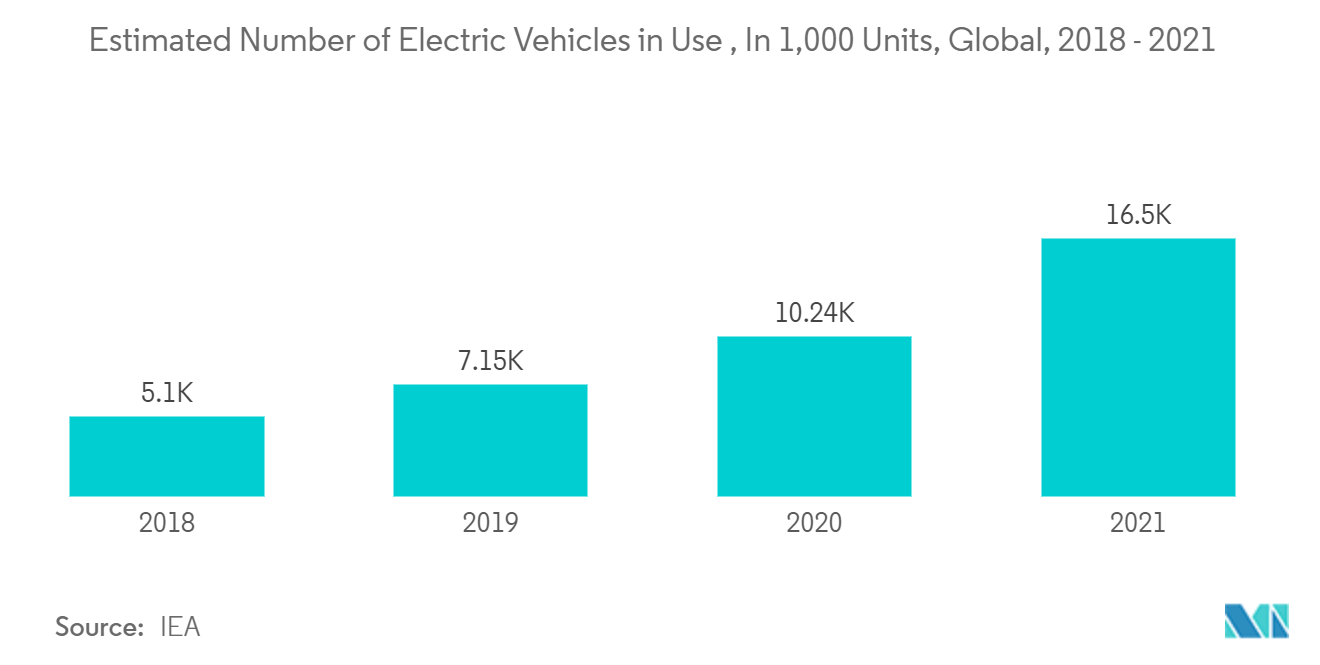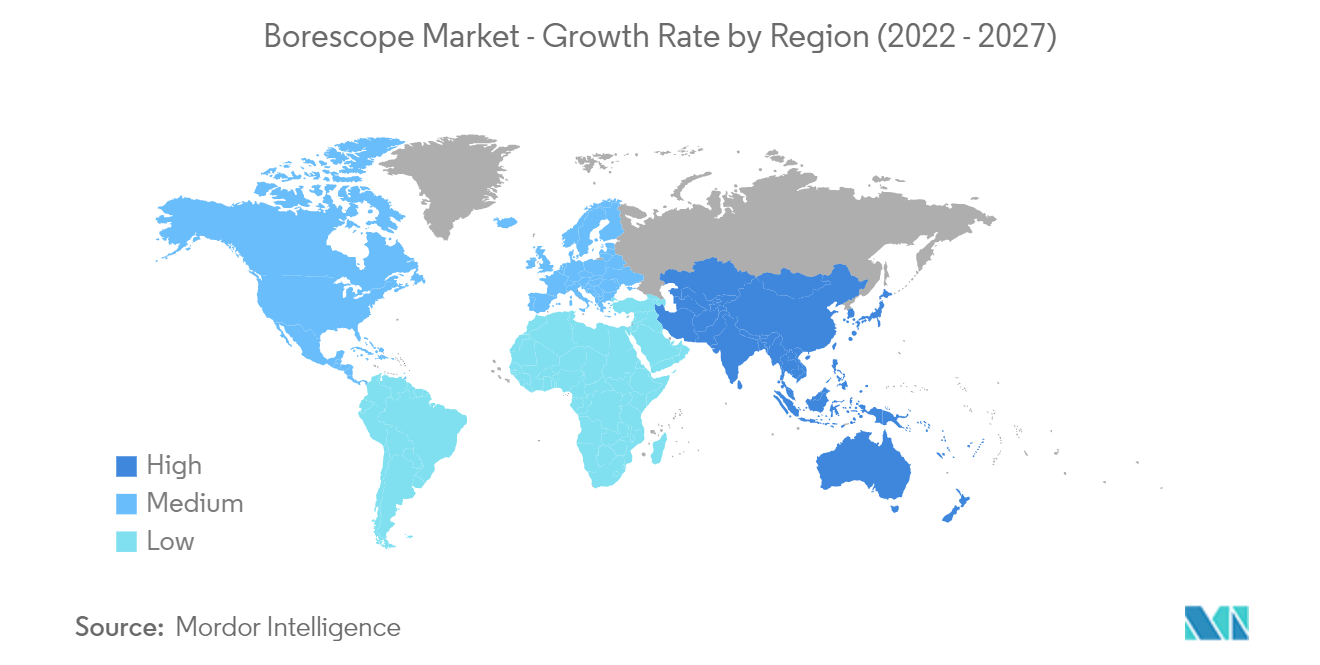Market Trends of Borescope Industry
This section covers the major market trends shaping the Borescope Market according to our research experts:
Automotive Industry to Exhibit High Growth
- The growing demand for the automotive industry and increasing emphasis on electrically driven vehicles, owing to the government intervention toward the low level of vehicle emission, have created a major impact on the industry. These are the primary drivers of the global borescope market, as borescopes are extensively used for the inspection of transmission system, linings, frames, and mufflers in the automobile industry.
- Furthermore, according to the IEA, there were approximately 10.2 million electric vehicles in operation worldwide in 2020, with an estimated 16.4 million electric vehicles in operation by 2021, further driving the market growth. In addition, according to the China Association of Automobile Manufacturers, in 2021, China produced approximately 21.41 million passenger cars and 4.67 million commercial vehicles.
- With automobiles becoming more advanced, smart, and complicated, the importance of remote visual inspection of modules, finished components, and subassemblies have become critical. Borescope helps automobile manufacturers save money and time, and improve quality by identifying out-of-spec or faulty parts before being integrated into a larger system.
- The proliferation of boroscopes and video scopes is gaining transaction in the automotive industry for the inspection of automotive components, including engine cylinders, hydraulic systems, fuel nozzles, valve seats, and welded tubing. Hence the demand for increment in the borescope market is directly proportional to the rising demand for the automotive industry, which has been skyrocketing as a result of the growing population and urbanization, globally. Further, in December 2021, Hyundai announced plans to invest INR 4,000 crores (USD 530.25 million) in R&D in India, intending to launch six EVs by 2028.
- Furthermore, according to the IBEF, in September 2021, the Indian government notified a PLI scheme for automobile and auto components worth INR 25,938 crores (USD 3.49 billion).
- Moreover, the need for precise supervision at manufacturing facilities to get a comprehensive view of minute parts and components in machines and equipment is identified to be another factor that is propelling the demand for borescopes in the automotive industry.

Asia-Pacific to Witness Highest Growth
- The Asia-Pacific region is expected to hold a premium share in the global borescope market. The increasing infrastructural development, growing automation in the manufacturing industry, and power generation in emerging countries, such as India and China, drive the growth of the borescope market in the Asia-Pacific region. Further, in April 2022, Tata Motors announced projects investing INR 24,000 crores (USD 3.08 billion) in its passenger vehicle business over the next five years in India.
- The increasing usage of advanced equipment in inspection activities and increasing investment in the repair and maintenance sector are major factors that stimulate the growth of the industrial borescope market in the region, as there is significant growth in end-use industries such as oil and gas, chemicals, automotive, and metallurgical, among others.
- Furthermore, according to IBEF, India could be a leader in shared mobility by 2030, opening up opportunities for electric and autonomous vehicles. Further, the Indian passenger car market was valued at USD 32.70 billion in 2021; is expected to grow to USD 54.84 billion by 2027.
- Countries in the region have shale gas activities and approved projects for commercial aircraft production, which is expected to manufacture sizeable in-house passenger planes. These projects are likely to propel market growth in the region.
- Moreover, according to the International Air Transport Association, India is anticipated to overtake China and the United States as the world's third-largest air passenger market by 2030. Furthermore, according to IBEF, the number of planes is expected to reach 1,100 by 2027, further driving the market growth.


